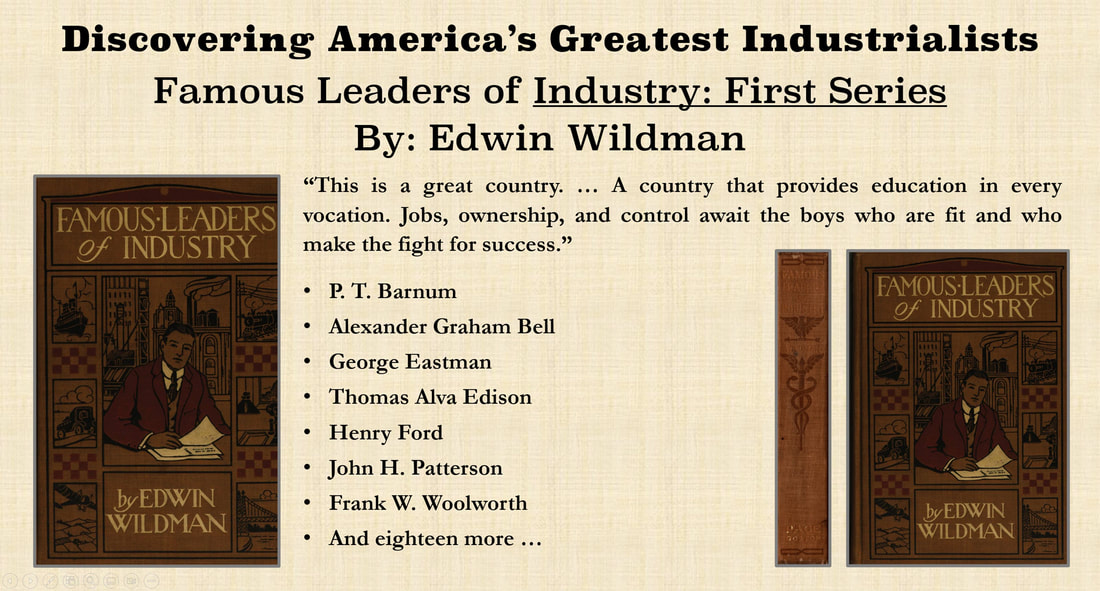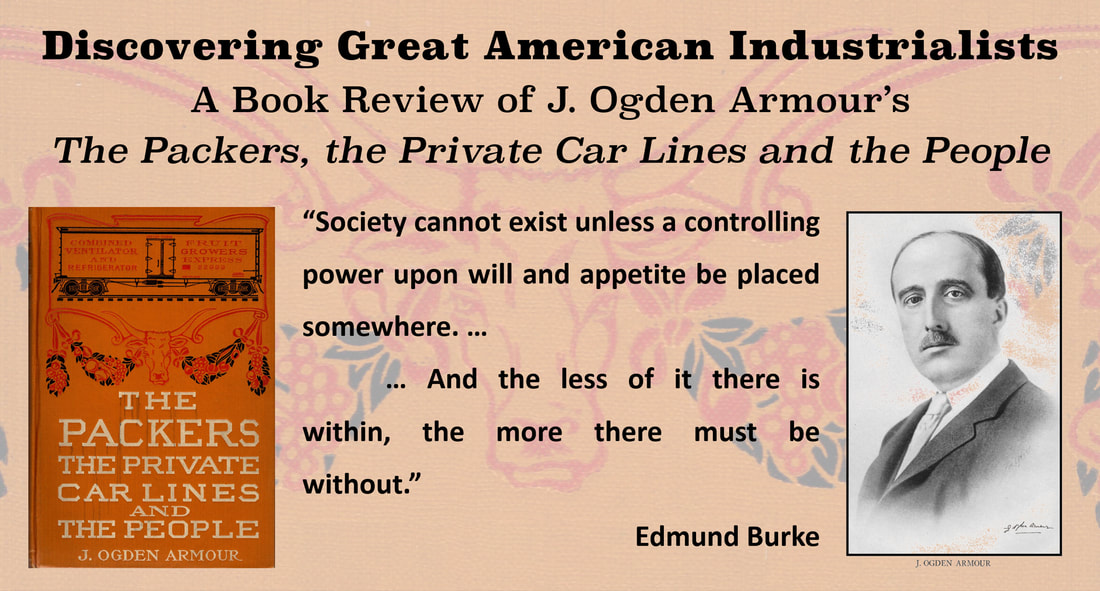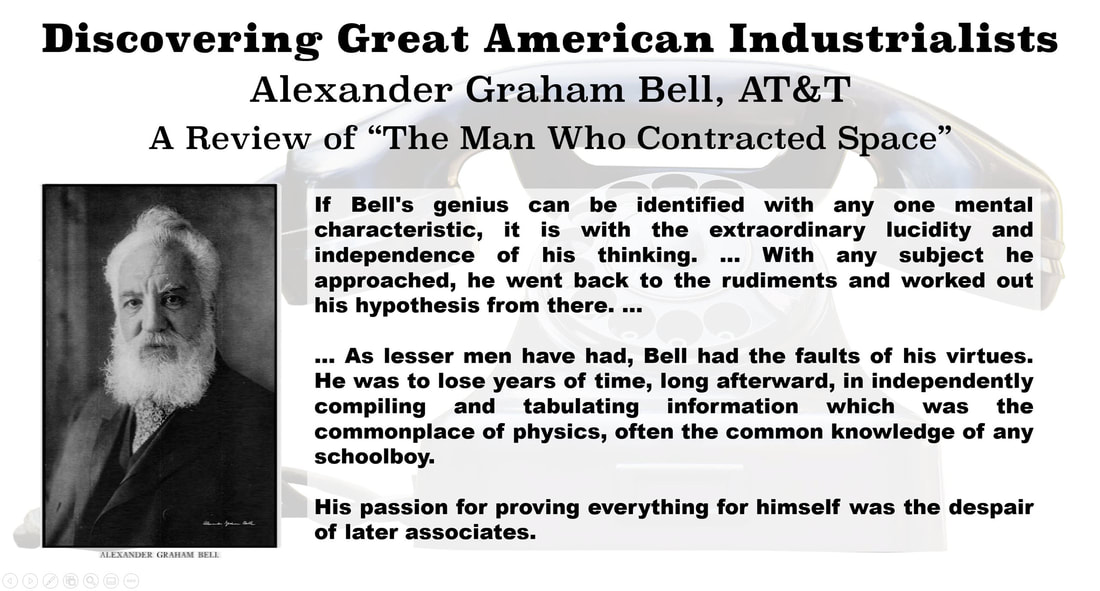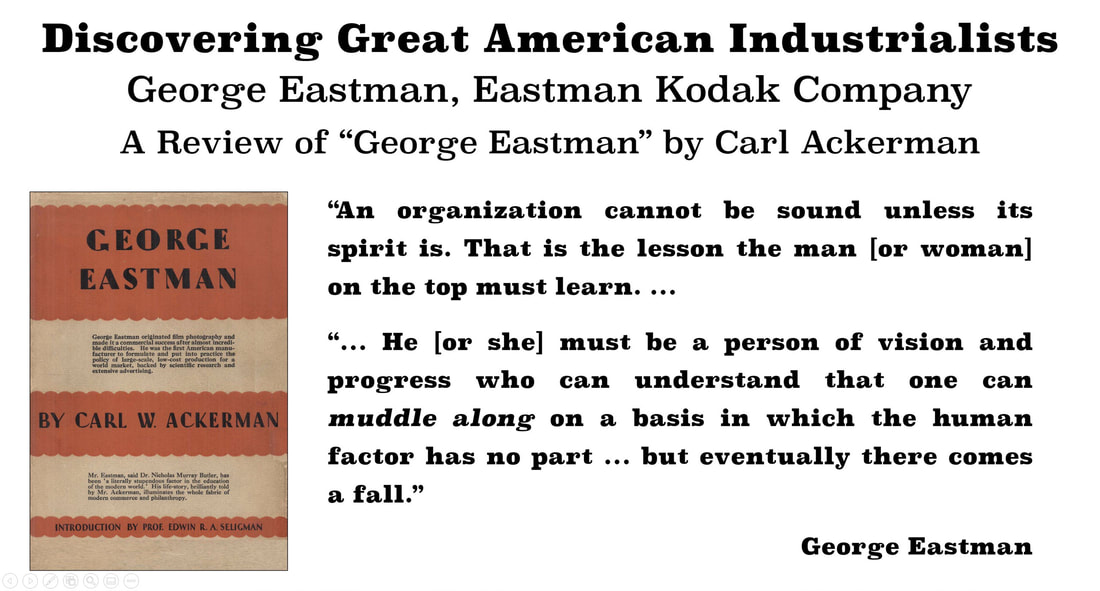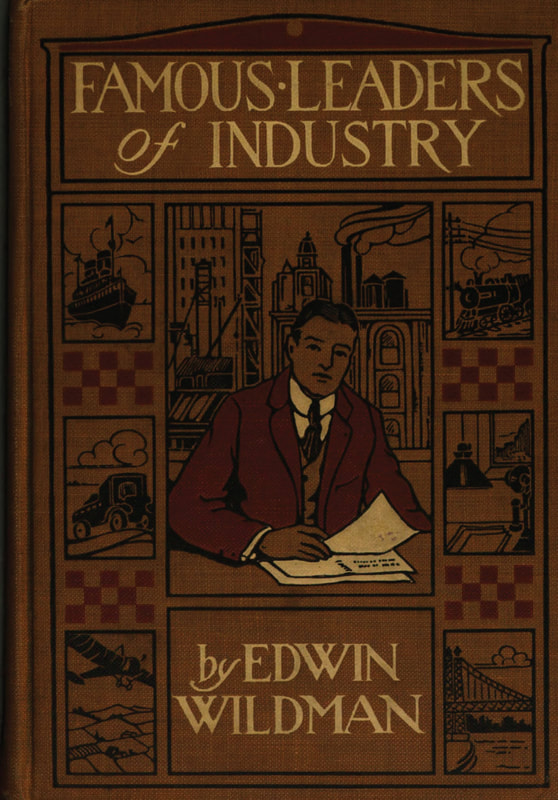A Review of "Famous Leaders of Industry: First Series"
- Reviews of the Day: 1920
- Edwin Wildman on “Famous Leaders of Industry: First Series”
- This Author’s Thoughts on “Famous Leaders of Industry: First Series”
- Industrialists Listed in "Famous Leaders of Industry: First Series"
Reviews of the Day: 1920
“Edwin Wildman … has published a book that has a real appeal. It does not handle the success of well-known industrial leaders in a dry statistical manner, but presents them as real, red-blooded men, many of whom went through the same hard experiences common to mankind in general.”
The Lawrence Daily Journal-World, “Book Review,” March 26, 1920
“It is a book of inspiration, as well as a chronicle of achievement, and the right sort of boys will enjoy and profit by its reading.”
The Nashville Tennessean, “Book Reviews,” March 28, 1920
“The stories contained in the volume constitute inspiring reading for the juvenile. … The Wildman stories have to do with men of humble parentage who have forged their way to front on the pathway of fame. … The stories are written in clear and forceful style.”
The Salt Lake Herald, “New Book Appeals to Every Home,” April 4, 1920
“The moral tone of the book is excellent. The author brushes aside the unworthy insinuations against the character of his heroes which are sometimes made by disgruntled proletariats and unsuccessful business rivals; and represents all of them as models of ability, perseverance, industry and virtue.”
The New York Tribune, “Successful Men,” May 9, 1920
Edwin Wildman on "Famous Leaders of Industry: First Series"
- On Philip Danforth Armour, Armour & Company Critical Business Decisions
|
“In 1878 the refrigerator-car was perfected, and this important event systematized the marketing of fresh meat. Mr. Armour saw the importance of this and knew that the refrigerator-car was the “open sesame” to a business of tremendous proportions. …
“Mr. Armour started to develop a line of by-products from the various parts of the animals slaughtered, which were not sold as meat, and which today is of such tremendous economic importance to the world [glue, fertilizer and soap]. … Philip Armour used to say, ‘Give me the waste from the animals slaughtered and I’ll make more money than the fellow selling the meat.’ |
More information on J. Ogden Armour’s running of the Armour & Co. business after his father’s death
|
“When Mr. Armour died in 1901, he had a concern doing a business of $180,000,000 a year. In 1918 the company did a business of $861,000,000 and employed fifty-seven thousand three hundred and three men in their sixteen plants and four hundred and twenty-five branch houses throughout various parts of the country.”
- On Alexander Graham Bell, More than Bell Telephone: Inventor and Humanitarian
|
“Besides the telephone, Alexander Graham Bell was one of the first of our great scientists and inventors to give an impulse to aviation.
“He was carrying on experiments, with what he called his “tetrahedral kites,” and needed a very light motor to put in them. Glenn Curtiss was then at Hammondsport, New York, making motorcycles, and Bell employed him to make his motors … giving him [Curtiss] his idea for the airship now bearing his name. … “Bell’s services to the deaf, whom he rescued from isolation by developing lip-reading into a science, were incalculable.” |
Read a review of Catherine Mackenzie’s “Alexander Graham Bell: The Man Who Contracted Space”
|
“Now the Ford is smooth and sleek, and still dependable as ever.”
- On George Eastman, Eastman Kodak Company and Photography
|
"Mr. Eastman has shown during his business career great cleverness and originality in his advertising methods. The short, snappy word KODAK, one of the best-known trademarks in the world, he made himself out of a few letters, after trying out innumerable real words.
“His phrase, “You press the button - we do the rest,” in Kodak advertisements caught on like wildfire and came into popular use in connection with endless other things. “His career, like Henry Ford's, illustrates the value of an idea.” |
Read a review of Carl Ackerman’s biography on George Eastman of Eastman Kodak Company
|
This Author’s Thoughts on "Famous Leaders of Industry: First Series"
|
I started this series with “Famous Leaders of Industry: Sixth Series” because Thomas J. Watson Sr. was covered in this volume. I was not particularly impressed with the book, but after reading this first in the series, I noticed the subtitle: “The Life Stories of Boys Who Have Succeeded.” In the “Introduction.” Edwin Wildman clearly states that his target audience is boys and to help them “find help and inspiration in the success of those … who commenced at the bottom and worked, round by round, to the top.”
So, this set of books is targeted to a young audience. There are no footnotes, endnotes or references, and the writing is of the type that could be called a little hyperventilating such as: “He never lost hope;” “His courage and persistence were truly wonderful;” “He never rested;” of “He never relaxed his efforts.” On the positive side, I enjoyed receiving a refresher on certain information. For instance, that Charles Flint—the organizer of C-T-R Company that became IBM—also funded the success of Orville and Wilbur Wright. |
|
The picture included here is from Flint’s book, “Memories of an Active Life.”
Of course, this excerpt exposes both the strength and the weakness of these articles: They are high level and as such skim over an entire man’s life to a very shallow depth. These books can serve as prompts to dig further into the lives of certain of these men. I have been spoiled by other anthologies by Forbes, Shaw, Crowther, Hendrick, and Tarbell. The antithesis of this book showing an awareness of human nature, direct interviews, and the evolving nature of 20th Century American businesses, was published within a year of this book: Burton J. Hendrick’s “The Age of Big Business.” |
Picture from Charles R. Flint’s “Memories of an Active Life.”
|
If more detailed information on individual industrialists is available on this website, I have provided links in the following list of leaders covered in this book.
Cheers,
- Pete
Cheers,
- Pete
The Twenty-Six Industrialists in "Famous Leaders of Industry: First Series"
Industrialist
Description from "Famous Leaders of Industry: First Series"
Description from "Famous Leaders of Industry: First Series"
|
|
|
